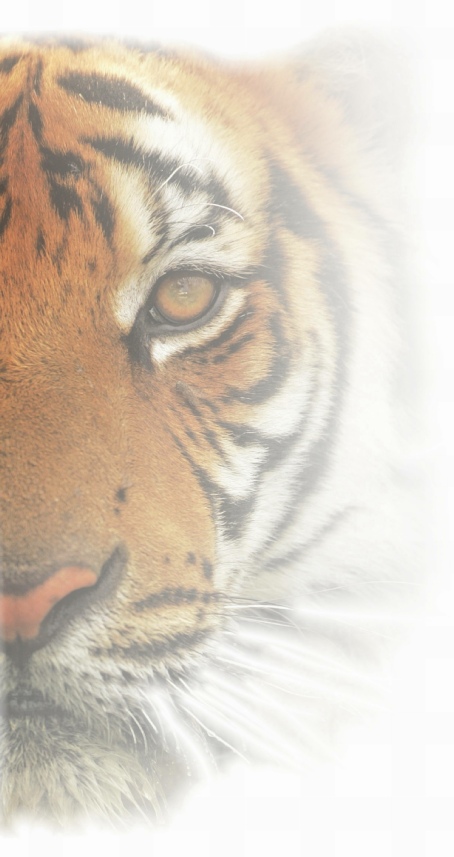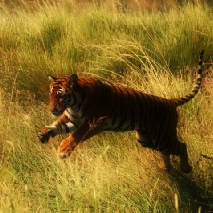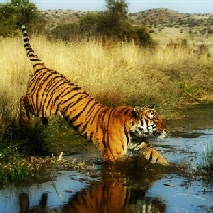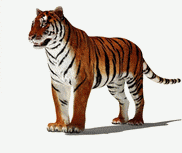
Ancestor to all tigers, driven to the brink of extinction, the South China tiger struggles to recover from a genetic bottle-

Adult male South China tiger:
-
-
-
-
-
and large-
In 1977 tigers were classified as protected and hunting was prohibited. By 1982, an estimated 150-
The South China tiger is the smallest tiger subspecies with the exception of the Sumatran tiger. Males measure 230 to 265 cm (91 to 104 in) and weigh 110 to 175 kg (243 to 385 lb). The coat has shorter fur than the Bengal or Siberian and is more intense yellowish colour; the stripes are broader, widely spaced and diamond-
Smaller prey species such as porcupines, hares and fowl form a smaller part of their diet.
Three subspecies have gone extinct since 1950 and all of the remaining subspecies are endangered. The South China tiger is the most endangered.


de serow, tufted deer, sambar, muntjac and wild pigs.
By 1987, the remnant population of wild South China tigers was estimated at 30-
scrapings and reported
sightings by local
people.
Although cited as the "World's Favourite Animal" in an Animal Planet survey across 73 countries, tigers in the wild are threatened around the world. It is estimated there were 100,000 in the wild in 1900 but now number about 3,000. Their range once ran through Russia, Siberia, Iran, Afghanistan, India, China and south-
As the largest member of the felidae family, the tiger is an apex predator species that has been around for millions of years. Tigers are carnivores, preferring to hunt larger prey such as ungulates and wild pig.




Males are significantly larger than females
Unlike cheetahs, tigers are better suited to using ambush and short chases
Unlike other felines, tigers love water
Post-
Photo: Gary Verstick
The South China tiger, also known as the 'Chinese' or 'Amoy' tiger', is considered critically endangered by the IUCN. The South China tiger originated in China two million years ago and today's South China tiger is considered a relict population of the "stem" ancestral tiger from which all other subspecies of tiger (Bengal, Siberian, etc) are derived. There are few, if any in the wild, with the last confirmed sighting over two decades ago. There are currently about 100 in captivity -
In the early 1950s, the South China tiger was reported to number more than 4,000 individuals in the wild when it became the target of large-

The South China Tiger


The South China Tiger
The Tiger


© Save China’s Tigers -

